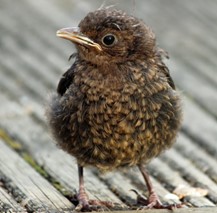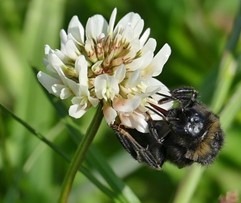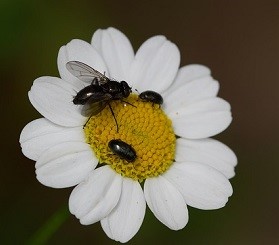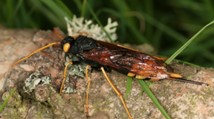Living Planet
Nature · Earth · ClimateNature Notes: August 2020
THE BIRDS AND THE BEES (AND THE BUTTERFLIES)
Whilst hay-makers' awaited the gaps between clouds mid-July, swifts wheeling on thermal updrafts were already scything the grey from the blue. The trickling laughter of gold-finches could be heard in 'the wings' whilst at eye-level, House Sparrows chattered happily in village hedgerows and took moisture wherever they could.


Maybe this is why a nesting couple proved to be especially partial to the tender, succulent leaves of my only two lettuce plants, although apart from gathering insects for their young, they are predominantly vegetarian. A fledgling backbird joined me in the kitchen, before feather-ruffling upstairs, where it perched quite happily on an open window ledge, purveying the scene below. Back down in the garden the pheasant chicks were preening and dustbathing in my clover-clad lawn. Now nearly full-size, they've been visiting various households in 'their patch', and my neighbours, like me, have had their hearts in their mouths each time they've crossed our busy village thoroughfare.

Also enjoying the clover here and elsewhere (pastures of it used to produce 75% of all British Honey before intensive agriculture) have been a 'buzz' of bumblebees, honeybees, solitary bees, hoverflies and a plethora of tiny (2-3mm) black or greenish bronze Pollen Beetles. Probably the first insects to pollinate flowering plants some 130 million years ago, I watched these little gems emerge mid- July, waggling their clubbed antennae amongst dandelions, thistles and wildflowers sprouting from my 'wild unmown'. They also explored the fronds of long-length 'blowsy' grasses, swaying, unruly and unkempt, much like our hair before the hair-dressers/barbers re-opened, before flying upwards into the heady air, towards the golden evening light.

Peach dusk coloured Cardinal Beetles swung on the tops of fresh white 'Bishops Flowers' along path edges and the initial scary vision of 1.5 inches of bright yellow/orange legs coming towards me at speed, turned out to be a harmless 'Giant Woodwasp' or 'Giant Horntail' Sawfly - her long stinger-like tail, just an ovipositor which she uses to lay her eggs into wood (particularly pine) where the larvae spend up to 5 years developing.
Large numbers of graceful ballerinas - 'Large White' butterflies, have been dancing the skies, skipping, landing, mating, before flitting again whilst kaleidoscopes of Peacocks (mainly the larger females) with mesmerizing azure hindwing eyespots have been hoovering nectar from the buddleia, both insects and flower heads swaying together, as one, in the breeze. When threatened in the dark, and these upside-down 'owl-eyes' are un-seen and therefore ineffective, instead they rub the veins on their forewings and hindwings together and make a 'flicking' sound to scare away predators.
August is a month of darker hues, purples, black berries, rosehips in the hedgerows and a harvest of plump ripe fruits, of heady heat and the perfume of late summer blooms. Birds, bees and butterflies will still be on the wing. This is the time when the adults of millions of 'Painted Ladies' are due to emerge, chirping crickets will be attracting mates and laying eggs under tufts of grass to hatch next spring and bees will be bringing in nectar to store for the winter. Many of our birds will have stopped singing (some moulting and some migrating) apart from Yellowhammers, who nest until late August and are known for their late season song - perhaps they're emboldened by disguise as their colours now match the gold stubbled fields after harvest. These newly blank open canvases though will bely the presence of any hares, perhaps a deer nibbling around the edge and the dark swirls of rooks overhead. Even if you can't spare 15 minutes to take part in the 2020 Big Butterfly Count (running from 17th July - 9th August 2020), try and take 10 to sit outside somewhere in our wonderful village and prepare to be enchanted by what you see.